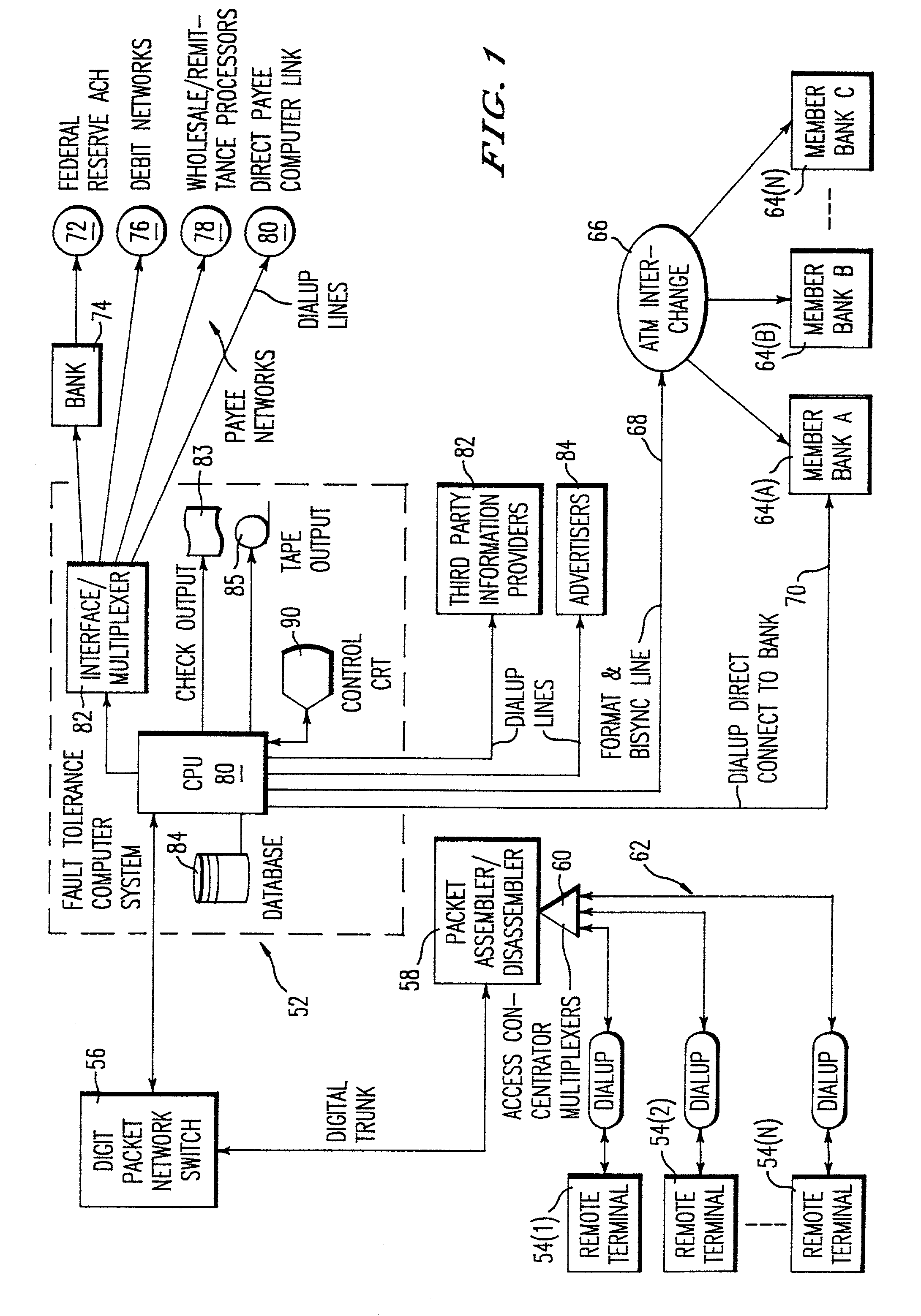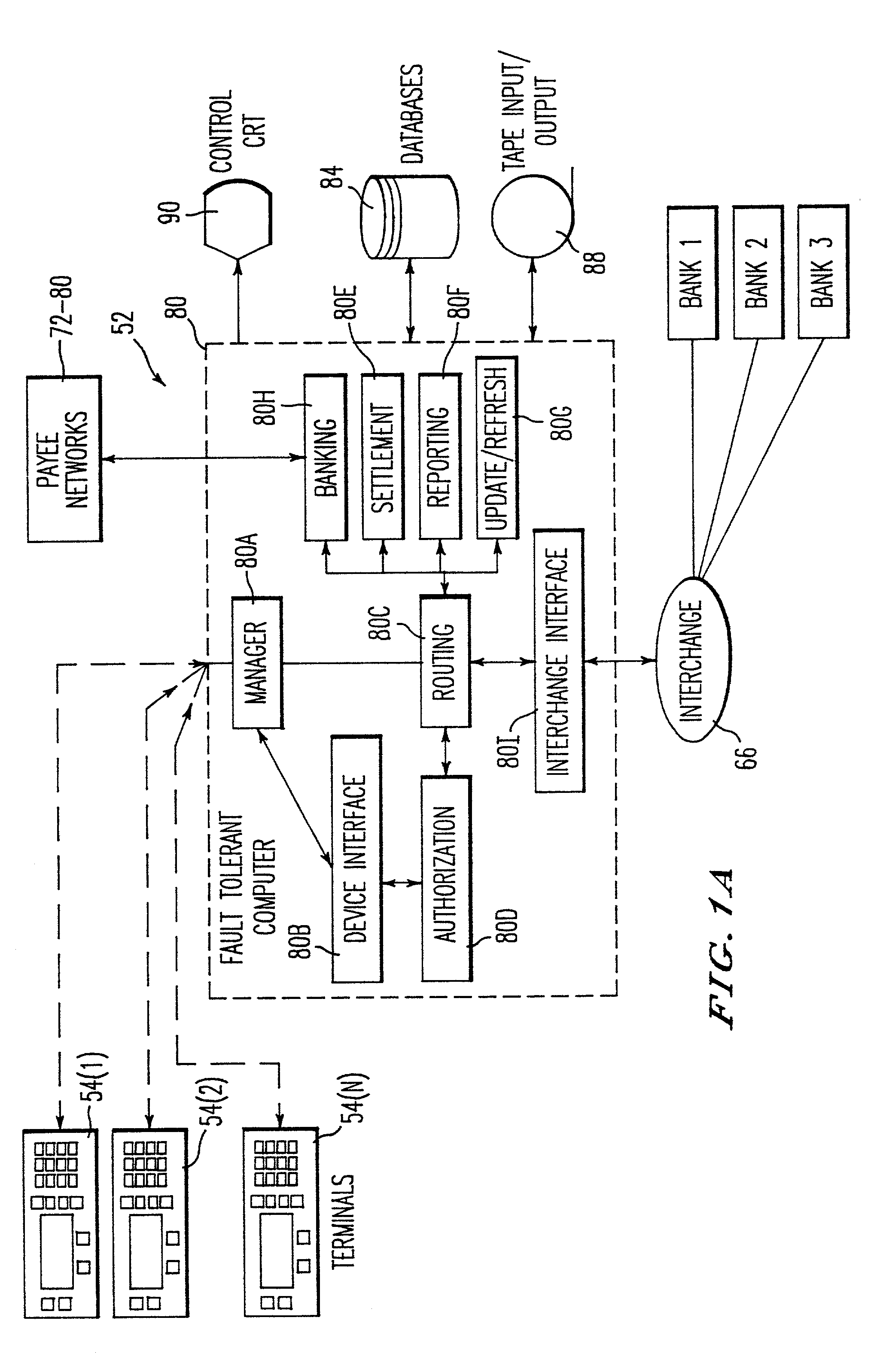Method and system for remote delivery of retail banking services
a technology for retail banking and remote delivery, applied in the field of method and system for remote delivery of retail banking services, can solve the problems of increasing the cost of telecommunication over telephone lines, increasing the cost of electronic mail, and increasing the cost of paper checks. , to achieve the effect of increasing profitability, reducing the volume of paper checks, and increasing capacity
- Summary
- Abstract
- Description
- Claims
- Application Information
AI Technical Summary
Benefits of technology
Problems solved by technology
Method used
Image
Examples
Embodiment Construction
[0169]FIG. 1 is a schematic block diagram of a presently preferred exemplary embodiment of a financial services distribution system 50 in accordance with the present invention. System 50 includes a fault-tolerant central computer system 52 (hereafter referred to as “central computer”), a plurality of remote terminals 54, a digital packet network (e.g., “public data network”) switch 56 (“PDN switch”), packet assembler / disassembler 58 and associated asynchronous communications interface 60, and a dialup telephone network 62 selectively connecting remote terminal 54 to the communications interface.
[0170]Data is communicated between remote terminal 54 and central computer 52 through the PDN switch 56, the packet assembler / disassembler 58, the communications interface 60, and dialup telephone lines 62.
[0171]In the preferred embodiment, PDN switch 56, packet assembler / disassembler 58, asynchronous communications interface 60 and dialup telephone network 62 are entirely conventional and ar...
PUM
 Login to View More
Login to View More Abstract
Description
Claims
Application Information
 Login to View More
Login to View More - R&D
- Intellectual Property
- Life Sciences
- Materials
- Tech Scout
- Unparalleled Data Quality
- Higher Quality Content
- 60% Fewer Hallucinations
Browse by: Latest US Patents, China's latest patents, Technical Efficacy Thesaurus, Application Domain, Technology Topic, Popular Technical Reports.
© 2025 PatSnap. All rights reserved.Legal|Privacy policy|Modern Slavery Act Transparency Statement|Sitemap|About US| Contact US: help@patsnap.com



